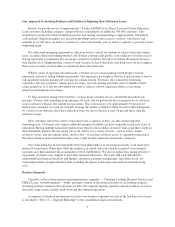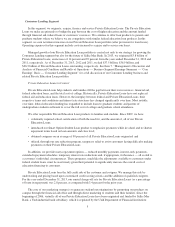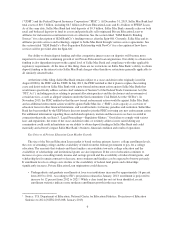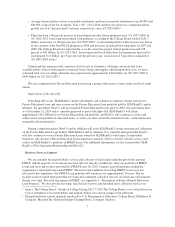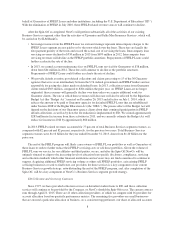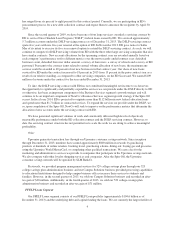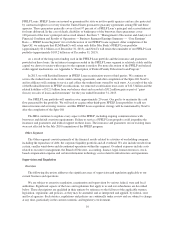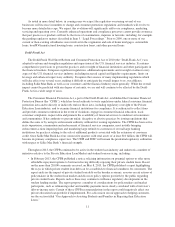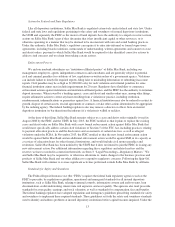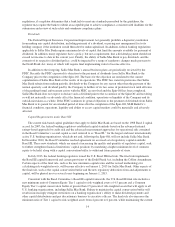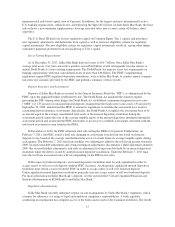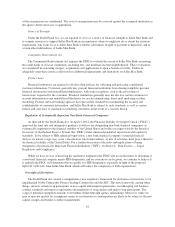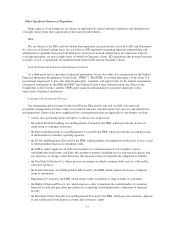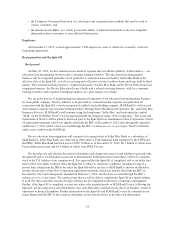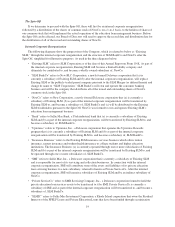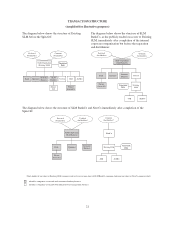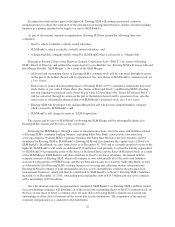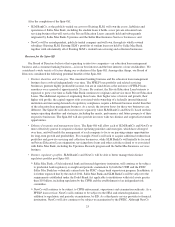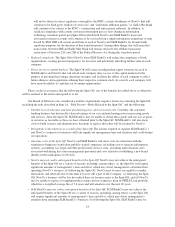Sallie Mae 2013 Annual Report Download - page 16
Download and view the complete annual report
Please find page 16 of the 2013 Sallie Mae annual report below. You can navigate through the pages in the report by either clicking on the pages listed below, or by using the keyword search tool below to find specific information within the annual report.regulations, if a regulator determines that a bank fails to meet any standards prescribed by the guidelines, the
regulator may require the bank to submit an acceptable plan to achieve compliance, consistent with deadlines for the
submission and review of such safety and soundness compliance plans.
Dividends
The Federal Deposit Insurance Corporation Improvement Act generally prohibits a depository institution
from making any capital distribution, including payment of a dividend, or paying any management fee to its
holding company if the institution would thereafter be undercapitalized. In addition, federal banking regulations
applicable to Sallie Mae Bank require minimum levels of capital that limit the amounts available for payment of
dividends. In addition, many regulators have a policy, but not a requirement, that a dividend payment should not
exceed net income to date in the current year. Finally, the ability of Sallie Mae Bank to pay dividends, and the
contents of its respective dividend policy, could be impacted by a range of regulatory changes made pursuant to
the Dodd-Frank Act, many of which will require final implementing rules to become effective.
In addition to the foregoing, Sallie Mae Bank’s annual business plans are periodically reviewed by the
FDIC. Recently the FDIC expressed its objection to the payment of dividends from Sallie Mae Bank to the
Company prior to the completion of the Spin-Off. The bases for the objection are unrelated to the current
capitalization of Sallie Mae Bank or the results of its operations. The FDIC has stated its preference that Sallie
Mae Bank refrain from making periodic dividends to the Company for any reason other than the payment of the
normal quarterly cash dividend paid by the Company to holders of its two series of preferred stock until all terms
of the pending formal enforcement action with the FDIC are resolved and the Spin-Off has been completed.
Sallie Mae Bank does not expect to declare such a dividend prior to the occurrence of the Spin-Off and not doing
so will not materially or adversely affect the financial condition, operations or liquidity of the Company and its
subsidiaries taken as a whole. If the FDIC continues its general objection to the payment of dividends from Sallie
Mae Bank to its parent for an extended period of time after the completion of the Spin-Off, SLM BankCo’s
financial condition, operations, liquidity and ability to access capital markets could be materially and adversely
affected.
Capital Requirements under Basel III
The current risk-based capital guidelines that apply to Sallie Mae Bank are based on the 1988 Basel I capital
accord. In 2007, the federal banking regulators established capital standards based on the advanced internal
ratings-based approach for credit risk and the advanced measurement approaches for operational risk contained
in the Basel Committee’s second capital accord, referred to as “Basel II,” for the largest and most internationally
active U.S. banking organizations, which do not and, following the Spin-Off, will not include Sallie Mae Bank.
In December 2010, the Basel Committee reached agreement on a revised set of regulatory capital standards:
Basel III. These new standards, which are aimed at increasing the quality and quantity of regulatory capital, seek
to further strengthen financial institutions’ capital positions by mandating a higher minimum level of common
equity to be held, along with a capital conservation buffer to withstand future periods of stress.
In July 2013, the federal banking regulators issued the U.S. Basel III final rule. The final rule implements
the Basel III capital framework and certain provisions of the Dodd-Frank Act, including the Collins Amendment.
Certain aspects of the final rule, such as the new minimum capital ratios and the revised methodology for
calculating risk-weighted assets, will become effective on January 1, 2015 for Sallie Mae Bank. Other aspects of
the final rule, such as the capital conservation buffer and the new regulatory deductions from and adjustments to
capital, will be phased in over several years beginning on January 1, 2015.
Consistent with the Basel Committee’s Basel III capital framework, the U.S. Basel III final rule includes a
new minimum ratio of Common Equity Tier 1 capital to risk-weighted assets of 4.5 percent and a Common
Equity Tier 1 capital conservation buffer of greater than 2.5 percent of risk-weighted assets that will apply to all
U.S. banking organizations, including Sallie Mae Bank. Failure to maintain the capital conservation buffer will
result in increasingly stringent restrictions on a banking organization’s ability to make dividend payments and
other capital distributions and pay discretionary bonuses to executive officers. The final rule also increases the
minimum ratio of Tier 1 capital to risk-weighted assets from 4 percent to 6 percent, while maintaining the current
14


